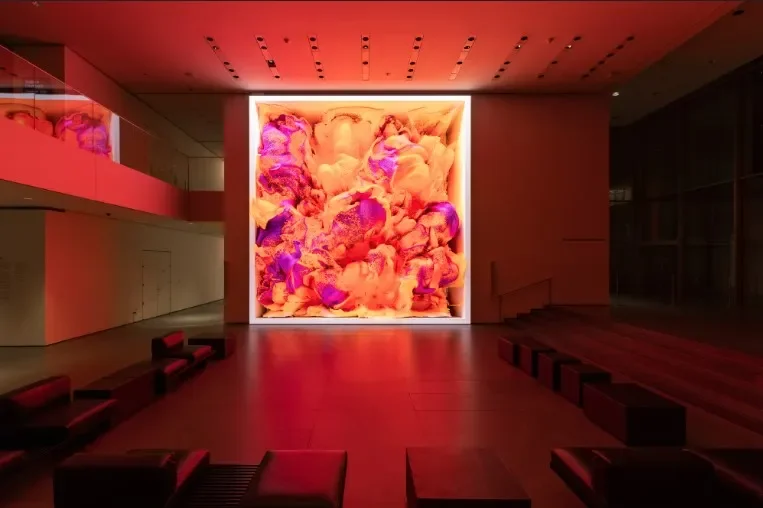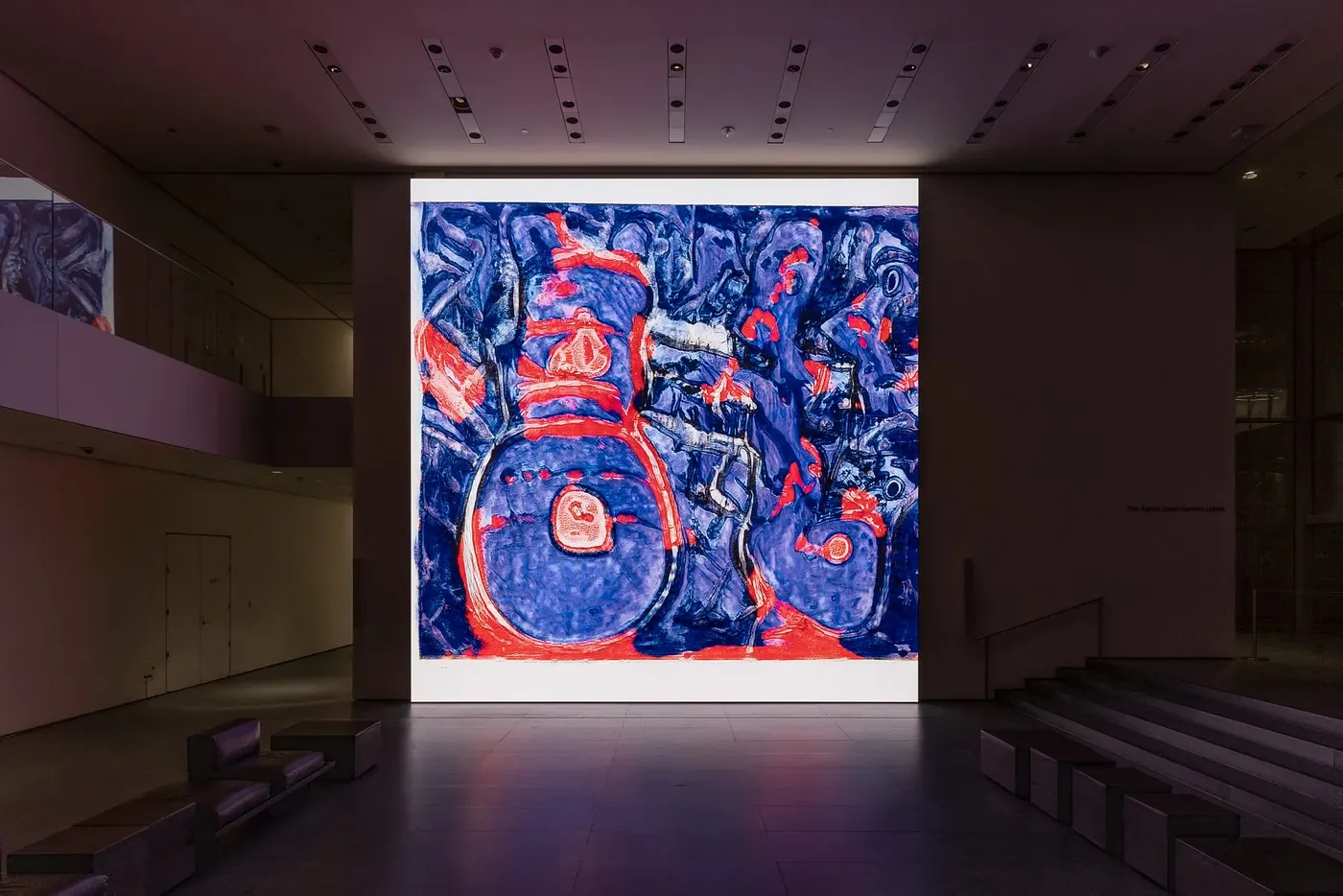From Dadaism to Dataism
Originally published on Medium on May 12, 2023, this piece is reposted here as part of our ongoing effort to bring all our writing home to Art Unpacked—and as a reminder of how quickly the conversation around AI and art continues to evolve.
What’s AI got to do with the MoMA?
Last November the MoMA launched a unique exhibit for the winter season: Refik Anadol’s Unsupervised. More commonly known as the three humongous LED walls in the museum’s ground-floor Gund Lobby.
The show, created by LA-based Turkish tech-whiz turned artist, uses artificial intelligence to animate high-res screens with ‘Machine Hallucinations’. While no psychedelics are involved, Unsupervised exists somewhere between the most captivating Windows 10 animated wallpaper and the soundscapes from a morning Yoga with Adriene playlist.
Anadol’s jumbo data sculptures provide an audio-visual, immersive experience by sequencing fluid, dysmorphic mashups of the museum’s historical hits.
By ingesting over 138.000 images into a machine learning model, Anadol’s team is able to generate unique and unpredictable outputs — i.e. the cute, mesmerising screensaver of screensavers.
Generative or derivative
The MoMA’s press release presented Unsupervised as an unprecedented meditation on technology, creativity, and modern art.
Rather than a meditation (no offence to the wicked mystical playlist!), Anadol is serving a ready-made, hypnotic hotchpotch of two hundred years of art history.
Unsupervised is a trippy ménage à trois between an AI algorithm, custom software, and the MoMA’s archive JPEGs. A piece of meta-art that transcends and cheats the creative process as we know it.
Steering clear of high art purism — or prudism, as we seem to be talking threesomes — it doesn’t take Jerry Saltz to question the creative value of the jumbo data sculpture and its alleged meditative message.
The decisive work behind the mega screens is data curation, which in this case is a drag and drop of 130-something-thousand images of the MoMA’s past collections.
The ‘Extremely Intelligent Lava Lamp’, quoting Artnet’s Ben Davis, is a fun trip in a convenient and engaging ready-to-Reel format, but quite far off MoMA’s premise of ‘reimagining the history of modern art’.
The series of machine hallucinations is, by all means, a phenomenal work of special effects. Constantly morphing abstraction on LED screens is transformative (of the MoMA’s archives) but not interpretative or meditative.
Unsupervised, bold in size yet timid in content, gives us a taste for what the AI revolution could bring to the art world. But does this work have enough flavour to deserve the prime real estate it occupies at one of the world’s most legendary art institutions? No.
The support of tech giants NVIDIA and Google which Mr Anadol has on speed dial are powerful credentials in the tech world, but should not be qualifying ones for the art world.
In conclusion: if you’re in for a trip, stick to your regular shaman.
And as a side note, anyone can now make AI artwork, just as anyone could always create a painting or a sculpture. The hard task is deciding which AI artwork gets to sit in a museum attracting seven million visitors per year.
With advancements in technology allowing for new possibilities and artistic expressions — and that does not include your AI-generated medieval dog portrait— art institutions must take a proactive approach to the curation of AI art and prioritise hiring artificial intelligence-proficient talent to help guide this process and shape the conversation around the relationship between AI and human creativity in the arts.

